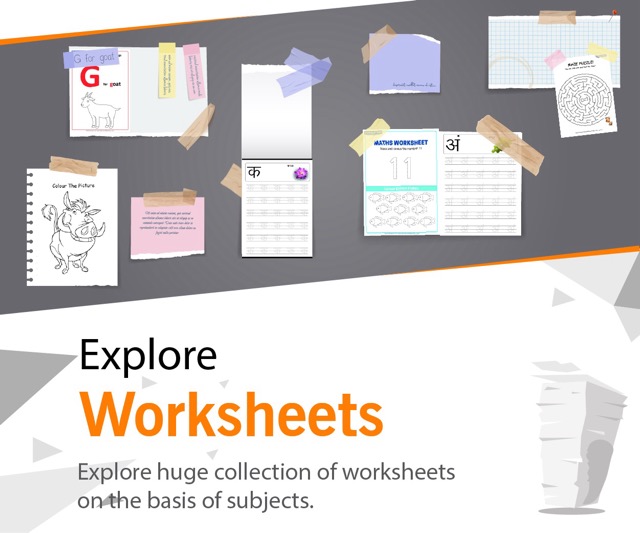In an increasingly digital world, fostering digital literacy in students has become essential. Digital literacy refers to the ability to effectively use technology to access, evaluate, create, and communicate information. It equips students with the skills they need to navigate the online landscape, think critically about digital content, and stay safe while using digital tools.
Top 10 ways to encourage digital literacy in students
Here are the top 10 ways to encourage digital literacy in students:
1. Integrate Technology into the Classroom
One of the most effective ways to encourage digital literacy is by integrating technology into everyday classroom activities. Teachers can incorporate digital tools like interactive whiteboards, tablets, and laptops into their lessons. Using technology to research topics, complete assignments, and collaborate on projects helps students develop practical digital skills that they will use in the future.
For example, students can learn to create presentations using software like Google Slides or PowerPoint, research using online databases, and participate in digital discussions through platforms like Google Classroom or Microsoft Teams. These experiences build their digital confidence and literacy.
2. Teach Safe and Responsible Internet Use
An important aspect of digital literacy is ensuring that students understand how to navigate the internet safely and responsibly. Educators should teach students about online privacy, the importance of safeguarding personal information, and recognizing potential online threats, such as cyberbullying or phishing scams.
Students should learn the basics of creating strong passwords, identifying secure websites (e.g., those with HTTPS), and understanding the ethical implications of sharing content online. Promoting digital citizenship can ensure students use technology in a manner that is respectful and safe.
3. Promote Critical Thinking and Media Literacy
In a world overflowing with information, teaching students how to critically evaluate digital content is crucial. Digital literacy includes the ability to distinguish credible sources from unreliable ones, especially when conducting research or interacting with social media. Educators can encourage critical thinking by guiding students through the process of evaluating online sources, checking for bias, and cross-referencing information from multiple outlets.
This also includes teaching students how to identify fake news, misleading content, and clickbait. By developing these skills, students become more discerning consumers of digital media.
4. Incorporate Coding and Programming Skills
Learning to code is an important aspect of digital literacy, as it gives students a deeper understanding of how technology works. Introducing coding and basic programming languages, such as Scratch for younger students or Python for older ones, can spark interest in technology and encourage problem-solving skills.
Coding exercises can be integrated into mathematics, science, or even art lessons, allowing students to create their own simple programs, websites, or apps. Exposure to coding early on builds a strong foundation for more advanced digital literacy skills.
5. Encourage Collaborative Online Projects
Collaborative online projects can help students build both their digital literacy and teamwork skills. Teachers can assign group projects that require students to use digital tools to work together, such as Google Docs for writing reports, shared digital whiteboards for brainstorming, or collaborative platforms like Trello or Padlet for project management.
Through these activities, students learn to communicate effectively online, share digital resources, and solve problems together, which are important skills in today's digital workplace.
6. Introduce Digital Content Creation
Encouraging students to create digital content—whether it's videos, blogs, podcasts, or infographics—helps them understand the creation process and how to use technology for self-expression. Students can learn how to edit videos, design graphics, or produce podcasts, which not only enhances their technical skills but also fosters creativity.
Digital content creation helps students develop storytelling, design, and editing skills, all of which are essential components of digital literacy. It also encourages them to think about their audience and purpose, teaching them how to communicate effectively through digital platforms.
7. Use Digital Simulations and Games for Learning
Digital games and simulations can be powerful tools for enhancing digital literacy in a fun and engaging way. Educational games that focus on problem-solving, strategy, and decision-making can help students understand complex concepts while improving their digital skills.
For example, math games, science simulations, or historical role-playing games can immerse students in a digital environment where they must apply their knowledge and skills. These activities not only make learning enjoyable but also help students become more comfortable with using digital tools.
8. Introduce Online Research Skills
Teaching students how to conduct research online is a critical aspect of digital literacy. Students should be familiar with how to use search engines effectively, understand keywords and search operators, and how to navigate academic databases. Educators can also introduce them to reliable sources like Google Scholar or government websites for academic research.
Students should be taught how to differentiate between scholarly sources and non-scholarly content, and how to cite digital information appropriately. Developing these skills early on is essential for students' academic success and their ability to find accurate information online.
9. Encourage Digital Communication Skills
Digital communication is an integral part of digital literacy. Whether it's through email, social media, or messaging platforms, students need to understand how to communicate effectively and professionally online. Teaching students the etiquette of online communication—such as the appropriate use of tone, language, and formatting—prepares them for future professional interactions.
Teachers can create activities where students practice writing formal emails, participate in online discussions, or collaborate with classmates through virtual platforms. These experiences help students become more confident and capable in digital communication.
10. Provide Access to a Variety of Digital Tools
Access to a range of digital tools is essential for building digital literacy. Schools should provide students with opportunities to explore different kinds of software, apps, and digital platforms. This can include access to word processors, graphic design tools, video editing software, and even 3D modeling programs.
By exposing students to different types of technology, schools help them develop a versatile skill set that can be applied in various contexts. Offering digital literacy workshops, tech clubs, or online courses outside of the classroom can further support students' learning and keep them up to date with the latest tools and trends.
Conclusion
Encouraging digital literacy in students is essential for their success in today’s digital world. By integrating technology into the classroom, teaching responsible internet use, promoting critical thinking, and providing opportunities for digital content creation, educators can prepare students to navigate the digital landscape confidently. These 10 strategies help create well-rounded, digitally literate individuals who can thrive in both academic and professional environments. As technology continues to evolve, fostering digital literacy will remain a cornerstone of modern education, equipping students with the skills they need to succeed in a technology-driven future.









Be the first one to comment on this story.